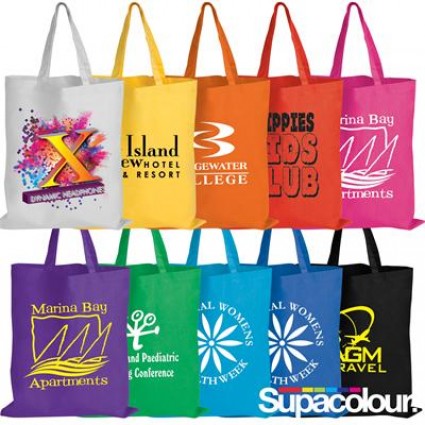Advice for Designers when Branding Promotional Products
- Written by Bill McGrath

Over the last 20 years our Fresh Promotions has delivered more than 80,000 custom branded product orders for clients, totalling many millions of items. Every one has included a customised logo or message. It’s a rare client who is not concerned about the way their brand appears on the products they order, however it’s our experience that even the most experienced designers and marketers don’t appreciate the subtleties of the branding process. Producing artwork for print or online use is all in a day’s work for graphic artists, however providing files suitable for use when printing on a physical, three dimensional product is usually something outside their experience. The common issue we experience dealing with professional designers is an expectation that the rules which apply for offset printing or online will work with a three dimensional, physical product. Sure, sometimes it can, but generally not. It’s not a word designers like to hear, but successful promotional branding requires some compromise. First your logo must compliment the product to which it is applied. Second, most of the time you are not working with a flat surface and the printing technologies available to mark a contoured surface are not sufficiently developed to achieve the results expected in other media.
Print area:
Compromise on Colours:
Files types:
Overviews of Branding Techniques
Pad Printing: The most common method pf branding a physical product, pad printing employs a soft, flexible silicone block to lift the one colour image from a plate and apply it to the surface of a product. Typically products like pens and keychains are pad printed. It is possible to pad print in multiple colours, however applying more than 2 colours can lead to problems with registration. The fine tolerances possible in offset printing multiple coloured designs are difficult to achieve with pad and screen printing.Screen Printing:
Heat Transfers:
Digital Colour Printing:
Rotary Printing:
Used primarily for drinkware like custom printed bottles and mugs. Other than a digital print which can be applied to products with a flat surface. Rotary printing allows you to print the majority of the external surface area of a curved product. The downside is that the cost is high and there is often a high level of spoilage during production. Again, the technology in this space is evolving quickly with digital rotary press systems already available. Rotary printing requires big machines and a major financial investment so to date the use of the technology has largely been limited to manufacturers of the products who can put through the high volumes necessary to justify the upfront investment.
Laser Engraving:
For metal products laser engraving is often the preferred branding option. Laser engraving removes a few microns of material from the surface of the product effectively making the design part of the final item. It is a subtle form of branding which has the advantage of being permanent. For metal pens, tools and <a href=“https://www.freshpromotions.com.au/keyrings”>keyrings</a> engraving is an ideal approach as hard use will not chip the print as can be the case with pad printing or digital print. The downside of laser engraving is that the image areas are smaller on 3D surfaces than with other branding options as the laser cannot follow the curves of the product and quickly distorts on the margins. Several companies have recently released innovative new laser engraving machines where the laser had rotates around the product, allowing larger print areas and reducing the level of distortion. It’s still early days and can only be applied to a limited range of products but the technology is showing a lot of promise and will most probably become the industry standard sometime in the next decade.
Embossing & Debossing:
A branding technique which is used almost exclusively on leather or synthetic leather products, a product is embossed by first making a “block" or “die" carrying a positive image of the design. It’s then a matter of force, the die is struck with a hammer of other blunt instrument which compresses the appropriate parts of the substrate, leaving a permanent impression. Debossing is the same process with the opposite result. the die carries a negative image of the logo which when struck against the substrate results in a raised brand. Embossing/debossing are stylish options used often in fashion. It is a subtle, but expensive way to add branding and is preferred for more upscale, textured items.
Not Sure?
Ask our advice! We receive complex files every day which designers have toiled over which are completely inappropriate for promotional branding. Remember, keep it simple, concentrate on enhancing the product with the branding and understand promotional products are a unique media with their own rules for art and design.






